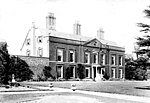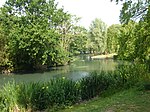Upper Edmonton

Upper Edmonton is the southern part of Edmonton, North London within the London Borough of Enfield. The main shopping area of Upper Edmonton on Fore Street is often referred to as "The Angel" by locals in reference to the former Angel public house that was demolished in 1968 to make improvements to the North Circular Road. The area borders Lower Edmonton to the north and Tottenham to the south, and is the location of North Middlesex University Hospital. Increased levels of immigration in recent years has led to the area becoming ethnically and culturally diverse, with local businesses and places of worship reflecting the area's diversity. Upper Edmonton is the location of the Meridian Water regeneration programme on a 210-acre site adjacent to the North Circular Road and Lea Valley, containing the Ravenside Retail Park and the large IKEA Edmonton store. The area is served by Silver Street and Meridian Water railway stations, with Angel Road having closed in 2019. Edmonton Green and White Hart Lane stations are to the north and south of the area respectively.
Excerpt from the Wikipedia article Upper Edmonton (License: CC BY-SA 3.0, Authors, Images).Upper Edmonton
Raynham Road, London Edmonton (London Borough of Enfield)
Geographical coordinates (GPS) Address Nearby Places Show on map
Geographical coordinates (GPS)
| Latitude | Longitude |
|---|---|
| N 51.614 ° | E -0.063 ° |
Address
Raynham Road
Raynham Road
N18 2JD London, Edmonton (London Borough of Enfield)
England, United Kingdom
Open on Google Maps








